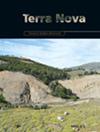比格尔海峡(火地岛)的活动断层
IF 1.7
3区 地球科学
Q2 GEOSCIENCES, MULTIDISCIPLINARY
引用次数: 1
摘要
在火地岛,麦哲伦—法格纳诺断层系统(MFFS)容纳了南美洲和斯科舍板块之间相当一部分的相对运动。然而,目前尚不清楚是否有一些变形沿着比格尔海峡断层系统(BCFS)向南分割。本文利用高分辨率地震反射剖面来识别比格尔海峡淹没第四纪沉积物中与断层相关的断裂。一些断裂到达海底,影响海洋沉积物,表明它们的年龄是全新世。与露头资料和陆上地貌的对比表明,冰期后两个构造重新激活:东西走向的BCFS和北西走向的Lapataia断裂带(LFZ)。而BCFS表现出沿走向的投掷变化,LFZ表现出显著的正常位移。这些结果表明,变形发生的范围比以前认为的更广泛,更复杂,并强调需要对该地区进行彻底的危害评估。本文章由计算机程序翻译,如有差异,请以英文原文为准。
Active faulting in the Beagle Channel (Tierra del Fuego)
In Tierra del Fuego, the Magallanes‐Fagnano Fault System (MFFS) accommodates a significant portion of the relative motion between the South America and Scotia plates. However, it remains unclear whether some of the deformation is partitioned southwards, along the Beagle Channel Fault System (BCFS). In this paper, high‐resolution seismic reflection profiles were used to identify fault‐related ruptures in the submerged Quaternary sediments of the Beagle Channel. Some faults reach the seafloor, affecting marine sediments, indicating they are Holocene in age. The correlation with outcrop data and lineaments mapped onshore suggests the post‐glacial reactivation of two structures: the E‐W striking BCFS and the NW‐SE‐trending Lapataia Fault Zone (LFZ). Whereas the BCFS displays along‐strike variation in throw, the LFZ shows significant normal displacements. These results imply that deformation occurs in a wider and more complex manner than previously thought and highlight the need for a thorough hazard assessment of the area.
求助全文
通过发布文献求助,成功后即可免费获取论文全文。
去求助
来源期刊

Terra Nova
地学-地球科学综合
CiteScore
4.80
自引率
8.30%
发文量
59
审稿时长
2.3 months
期刊介绍:
Terra Nova publishes short, innovative and provocative papers of interest to a wide readership and covering the broadest spectrum of the Solid Earth and Planetary Sciences. Terra Nova encompasses geology, geophysics and geochemistry, and extends to the fluid envelopes (atmosphere, ocean, environment) whenever coupling with the Solid Earth is involved.
 求助内容:
求助内容: 应助结果提醒方式:
应助结果提醒方式:


